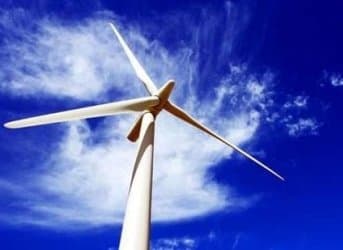What is the fate of energy in a social welfare state? Denmark is such a state, and it is aggressively pursuing a carbon-free future.
It provides free education from kindergarten through university; a free medical system that costs just 9 percent of its gross domestic product, as opposed to the 17 percent that goes to health care in the United States.
Women in Denmark get a year of maternity leave; to prevent employers from discriminating against them, men get paternity leave, three months of it.
In addition to this small-weave social net, the Danes, all 5.5 million of them, are well down the road to a carbon-free future. Currently, windmills generate a whopping 28 percent of Denmark's electricity; by 2020, they will generate 50 percent of the country's electricity. According to Peter Taksoe-Jensen, Danish ambassador to the United States, the plan is for the Danish economy to be carbon-free by around 2050.
As maritime country, Denmark can place much of its wind generation offshore. Its emphasis on wind power has made it the world's leading exporter of wind turbine technology. A Danish company, Vestas, has three manufacturing sites in the United States that employ 5,000 people.
In wind farming, size matters; the larger the wind turbine, the cheaper the collection of the electricity, and the more efficient the maintenance.
Related Article: A Clean Energy Revolution is Underway at the DOE
This is driving the Danes to larger and larger machines. Most onshore wind turbines in the United States are rated a little over 1 megawatt. The Danes have some rated at 6 MW and are contemplating 10-MW monsters far out to sea -- where no one except mariners will see them.
Biomass is also a favorite of the alternative-energy culture in Denmark.
This is a practicality, not a wish. With more than 25 million pigs, manure is a very available resource for the Danes and they are using it.
Denmark has one of the highest bicycle penetrations in Europe with more than half of Danes biking to work and everywhere else. In Copenhagen, the principal traffic problem is congestion on the bike paths and bike highways, according to Amb. Taksoe-Jensen. As gasoline costs between $10 and $12 a gallon, it is not altogether surprising the Danes have learned to love their two-wheelers.
This seeming Green Revolution had its roots not in concern over global warming, but rather in the Arab oil embargo and the resulting energy crisis of 1973-74. At the time, Denmark was almost entirely dependent on imported oil and other fossil fuels and was very hard hit. Amb. Taksoe-Jensen says the Danes said to themselves “never again” and set out to become energy self-sufficient in any way they could with what was at hand. The idea that you could be green as well came later, as a kind of bonus.
On its journey to a renewable future, Denmark got a leg up from the discovery of oil and gas in the North Sea, which became available in the 1970s. This has now peaked and will be gone in about 20 years. But it has been a valuable transition fuel and currency earner.
Denmark is part of the European Union and NATO. It uses the krone as its currency, which is pegged to the euro.
Related Article: Google Ups the Ante for Renewable Investments
The economic storms that have been raging over Europe since 2008 have affected Denmark. Global demand for Danish technology and agricultural products has protected Denmark from a severe buffeting. Unemployment which was at 2.5 percent has risen to 6 percent; in most of Europe, unemployment is over 10 percent.
ADVERTISEMENT
To this sanguine picture of a future that appears to work, add one more bonus: for three years straight, polls conducted by the Organization for European Cooperation and Development have ranked the Danes as the happiest people in the world. Last April, a gastropanel crowned Danish restaurant Noma the best in the world for the third year in a row.
For all of this, the Danes pay a price: They have the highest taxes on Earth and the state is ever-present.
By Llewellyn King
Llewellyn King is executive producer and host of “White House Chronicle” on PBS. His e-mail is lking@kingpublishing.com.


















